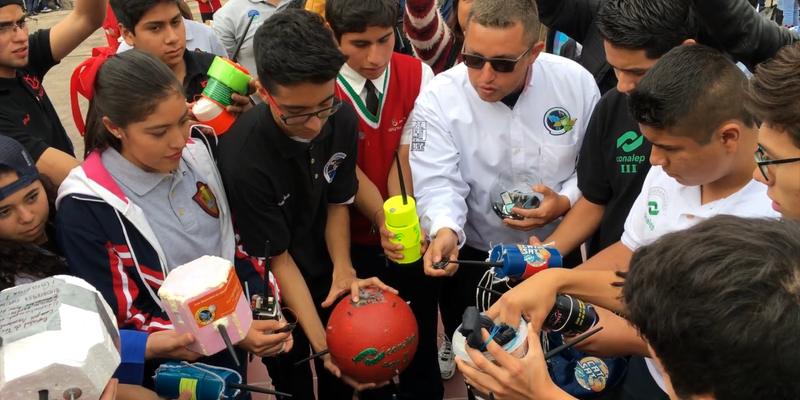No matter whether you call them “picosatellites” or “high altitude balloons” or “spaceblimps”, launching your own electronics package into the air, collecting some high-altitude photos and data, and then picking the thing back up is a lot of fun. It’s also educational and inspirational. We’re guessing that 264 students from 30 high schools in Aguascalientes Mexico have new background screens on their laptops today thanks to the CatSat program (translated here by robots, and there’s also a video to check out below).
 The package on each balloon was roughly similar — consisting of an Arduino with a custom shield, a GPS, accelerometer, temperature/humidity sensor, and a LoRA radio unit. (Full details on the technical page of the wiki — it looks like a great general-purpose setup.) Armed with this basic platform, the schools added cameras or built intricate capsules, or otherwise customized their payload, and then it was time to launch.
The package on each balloon was roughly similar — consisting of an Arduino with a custom shield, a GPS, accelerometer, temperature/humidity sensor, and a LoRA radio unit. (Full details on the technical page of the wiki — it looks like a great general-purpose setup.) Armed with this basic platform, the schools added cameras or built intricate capsules, or otherwise customized their payload, and then it was time to launch.
It must have been really fun to watch them go up, one after the other. And you can hardly overestimate how many young engineers or hackers an experience like this will create.
Thanks to [Andrés Sabas] for the tip, via El Heraldo.
















Rumor has it that the performance of these satellites was inflated.
The performance of these satellites in the real life was amazing,
More than expected
A joke so lofty it flew way over head.
Way to burst my bubble :(
‘Up’ you go!
Exactly! +1
Punsters need an altitude adjustment.
Like ;-)
Pretty well documented, BUT All of the balloons lacks of radar corner reflectors!
Yes, a very impressive project and extremely well documented. This is the first balloon project I’ve found that has made all PCB files and firmware readily available. Anyone know of any others?
On the radar retro-reflectors, they aren’t flying in US FAA airspace. Perhaps this isn’t required in Mexico or the total weight of the very low mass payload isn’t enough to require RRs even in the U.S.?
Look up Pi in the Sky. I believe he has open sourced the hardware and firmware.
As Winston says, it’s in Mexico. But isn’t there also some weight limit below which the reflectors are optional, but courteous?
yes, but can it carry a payload of 50kg of white powder across the border?
MAYBE CAN CARRY A BRAND NEW BRAIN FOR SOME GUYS.
is the Mexican space program that underfunded?